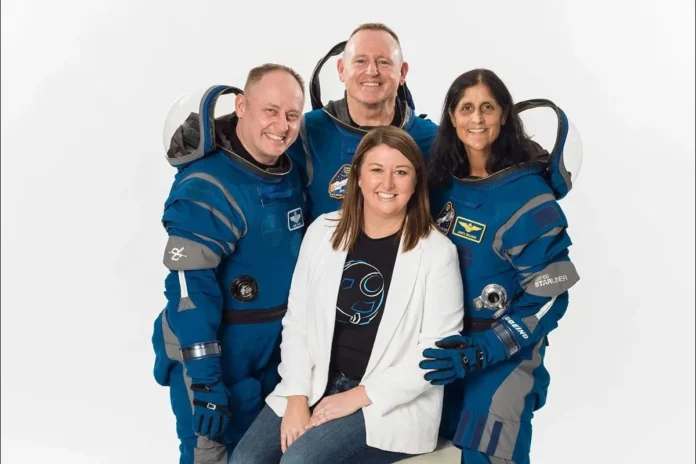NASA recently provided an update regarding astronauts Suni Williams and Butch Wilmore, currently stranded on the International Space Station (ISS).
These two astronauts have been in space far longer than initially planned. Their mission, originally scheduled for eight days, has extended over two months due to technical issues with Boeing’s Starliner spacecraft. NASA‘s Aug. 14 teleconference aimed to inform the public about the ongoing efforts to bring the astronauts back to Earth safely.
Williams, 58, and Wilmore, 60, are in good spirits despite the unexpected delay. They are seasoned astronauts, well-prepared for such unforeseen situations. Joe Acaba, the chief of NASA’s Astronaut Office at the Johnson Space Center in Houston, emphasized that astronauts are trained to handle these uncertainties. He stated, “It’s part of our jobs. We understand that launch dates may slip, and mission durations might change in real-time. As professionals, they’re doing great.”
NASA’s focus now is on finalizing the best course of action to return the astronauts home. Ken Bowersox, associate administrator for NASA’s Space Operations Mission Directorate, mentioned that the team is working diligently to complete their analysis. They expect to have a clear plan within a week, followed by a formal review before the end of August. Consequently, Williams and Wilmore might have to wait up to two more weeks to learn their fate. NASA is considering whether to attempt a return using the Starliner or opt for SpaceX’s Dragon capsule.
If SpaceX’s Dragon capsule becomes the chosen method, the astronauts could remain on the ISS for an additional six months, extending their stay until February 2025. Fortunately, the ISS receives regular resupply missions, so NASA is not overly concerned about food supplies. However, one significant concern is the increased exposure to radiation. The longer the astronauts remain in space, the greater the risk of radiation exposure. Despite this, NASA does not foresee major issues, as the longest possible stay for Williams and Wilmore would be eight months. The American record for an individual astronaut’s time in space exceeds a year, providing some reassurance.
Boeing, although absent from the Aug. 14 press conference, remains confident in Starliner’s ability to resolve the technical problems. The spacecraft has encountered issues such as leaks in its propulsion system and five failed thrusters. On Aug. 9, Boeing expressed its belief in Starliner’s capability to return the astronauts safely. They stated, “We still believe in Starliner’s capability and its flight rationale. If NASA decides to change the mission, we will take the necessary actions to configure Starliner for an uncrewed return.”
In the meantime, Williams and Wilmore continue to contribute to the ISS’s ongoing operations. Both are retired Navy captains with extensive experience on long-duration space missions. They are utilizing their extended time in space to conduct scientific experiments and assist other crew members with maintenance tasks. Acaba noted, “They will do what we ask them to do, and that’s their job as astronauts.”
NASA remains committed to bringing these astronauts home safely. The decision-making process is complex, requiring careful consideration of various factors. Nonetheless, Williams and Wilmore continue to fulfill their duties on the ISS, demonstrating the resilience and professionalism that define NASA astronauts.


